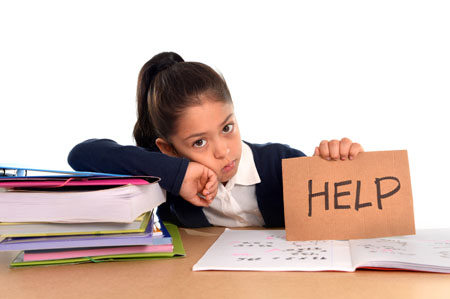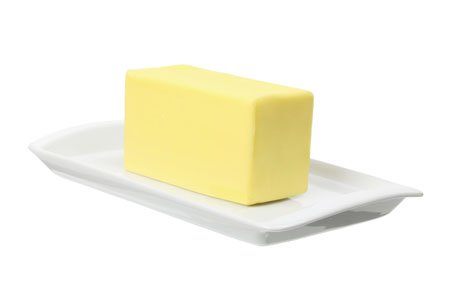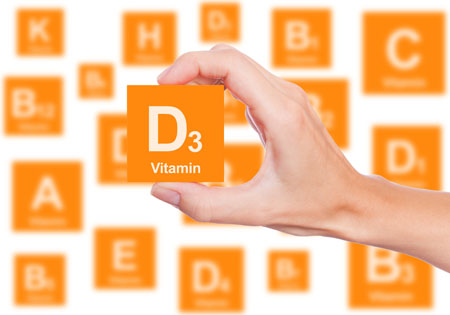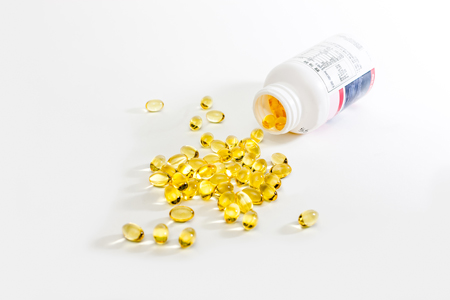Subthreshold Episodes of Mania Best Predictor of Bipolar Disorder in Children
Relatively little attention has been paid to the children of a parent with bipolar disorder, who are at risk not only for the onset of bipolar disorder, but also anxiety, depression, and multiple other disorders. These children deserve a special focus, as on average 74.2% will receive a major (Axis 1) psychiatric diagnosis within seven years.
New research published by David Axelson and colleagues in the American Journal of Psychiatry describes a longitudinal study comparing children who have a parent with bipolar disorder to demographically matched children in the general public. Offspring at high risk for bipolar disorder because they have a parent with the disorder had significantly higher rates of subthreshold mania or hypomania (13.3% versus 1.2%) or what is known as bipolar disorder not otherwise specified (BP-NOS); manic, mixed, or hypomanic episodes (9.2% versus 0.8%); major depressive episodes (32.0% versus 14.9%); and anxiety disorders (39.9% versus 21.8%) than offspring of parents without bipolar disorder. Subthreshold episodes of mania or hypomania (those that resemble but do not meet the full requirements for bipolar disorder in terms of duration) were the best predictor of later manic episodes. This finding was observed prospectively, meaning that patients who were diagnosed with manic episodes during a follow-up assessment were likely to have been diagnosed with a subthreshold manic or hypomanic episode during a previous assessment.
The study included 391 children (aged 6–18) of at least one bipolar parent, and compared these to 248 children of parents without bipolar disorder in the community. The participants took part in follow-up assessments every 2.5 years on average, for a total of about 6.8 years. Each follow-up assessment included retrospective analysis of symptoms that had occurred since the previous assessment.
In addition to having more subthreshold manic or hypomanic episodes; manic, mixed, or hypomanic episodes; and major depressive episodes, the high-risk children also showed more non-mood-related axis 1 disorders, including attention deficit hyperactivity disorder (ADHD), disruptive behavior disorders, and anxiety disorders than the children of parents without bipolar disorder. Axelson suggested that monitoring for these symptoms may help with early identification and treatment.
Children with a bipolar parent were diagnosed with bipolar spectrum disorders at rates of 23% compared to 3.2% in the comparison offspring. Mean age of onset of mania or hypomania in the high-risk offspring was 13.4 years. Of those offspring who had a manic episode, more than half had the episode before age 12, with the earliest occurring at age 8.1.
Compared to previous studies of children of parents with bipolar disorder, this study found that the mean age of onset of manic or hypomanic episodes was younger, possibly because other studies did not include young children. Another new finding was that major depressive episodes were risk factors for mania and hypomania but did not always precede the onset of mania or hypomania in the high-risk offspring.
Parents of children who are at high risk for developing bipolar spectrum disorders should be aware of the common precursors to mania—subthreshold manic or hypomanic symptoms and non-mood disorders—and make sure that clinicians assess for these symptoms and differentiate them from the symptoms of depression or other disorders.
Editor’s Note: In Axelson’s study, 74.2% of the offspring of a bipolar parent suffered a major (Axis I) psychiatric disorder. However, 48.4% of the offspring from the comparison group of community controls also had an Axis 1 psychiatric disorder. These high rates of illness and dysfunction indicate the importance of monitoring a variety of symptom areas and getting appropriate evaluation and treatment in the face of symptoms that are associated with impairment in both high risk children and in the general population.
One way of doing this is for parents to join our new Child Network, a study collecting information about how children at risk for bipolar disorder or with symptoms of bipolar disorder are being treated in the community and how well they are doing. Parents rate their children on a weekly basis for depression, anxiety, ADHD, oppositionality, and mania-like symptoms. Parents will be able to produce a longitudinal chart of their children’s symptoms and response to treatment, which may assist their child’s physician with early detection of illness and with treatment. See here for more information and to access informed consent documents.
Omega-3 Fatty Acids Improve Attention in Boys
A new study finds that omega-3 fatty acid supplementation improves attention in boys both with and without attention deficit hyperactivity disorder (ADHD). The study by Dienke J. Bos and colleagues in the journal Neuropsychopharmacology included 40 boys (aged 8–14) with ADHD and 39 demographically matched controls. Participants were given 10 g per day of margarine supplemented with either omega-3 fatty acids (eicosapentaenoic acid (EPA) and docosahexaenoic acid (DHA)) or placebo.
The children who received EPA/DHA supplementation showed improvements in attention (as rated by parents) compared to those who received placebo. Improvement was greater in the children with ADHD. Supplementation did not affect cognitive control or brain activity on functional magnetic resonance imaging (fMRI). Those boys who received omega-3s showed higher DHA levels on followup.
Low Vitamin D Levels in Childhood Can Predict Hardening of the Arteries in Adulthood
A new study from Finland suggests that low vitamin D levels in childhood and adolescence can predict atherosclerosis, or hardening of the arteries, in adulthood. The study, by Markus Juonala and colleagues in the Journal of Clinical Endocrinology & Metabolism, included 2,148 people whose vitamin D levels were measured at ages 3–18. They were checked for atherosclerosis at ages 30–45. Those participants with the lowest levels of vitamin D in their youth were at much higher risk for thickened arteries as adults. The finding was independent of other cardiovascular risk factors such as smoking, high blood pressure, poor eating, lack of exercise, and obesity.
Editor’s Note: While it is not yet clear if low vitamin D levels directly cause the development of atherosclerosis, it is important to maintain sufficient vitamin D in childhood for a host of reasons, including strong bones. Children with sufficient vitamin D levels are more likely to have normal moods and behavior than those deficient in vitamin D.
Maternal Warmth Does Not Negate Corporal Punishment
New research shows that expressions of maternal warmth following corporal punishment do not reduce children’s anxiety, and may even increase it.
The study by Jennifer E. Lansford and colleagues was published in the Journal of Clinical Child & Adolescent Psychiatry. The researchers interviewed over a thousand children aged 7–10 and their mothers about what type of physical punishment occurs in their family, and about anxiety and aggression in the children. They followed up again after one and two years. The study took place in eight countries: China, Colombia, Italy, Jordan, Kenya, the Philippines, Thailand, and the United States.
In general, corporal punishment increased anxiety in the children, while maternal warmth decreased it. How warmth and physical punishment interacted depended on the country. Anxiety increased over time in families where the mothers were high on both corporal punishment and warmth. Lansford and colleagues wrote that it might be “simply too confusing and unnerving for a child to be hit hard and loved warmly all in the same home.”
The researchers suggest that parents use nonphysical ways to promote desirable behavior in their children, including putting younger children in time-out and requiring teenagers to participate in activities that help others.
Mother’s Treatment for Depression Can Affect Children’s Symptoms
Studies have found that when a depressed mother’s symptoms remit, her children are less likely to show psychiatric symptoms. A new study by Myrna M. Weissman and colleagues in the American Journal of Psychiatry randomized 76 mothers to treatment with escitalopram, bupropion, or a combination of the two, and assessed the impact of the mothers’ treatment on their 135 children (aged 7–17).
There were no significant differences in the mothers’ symptoms or remission, but children’s depressive symptoms and functioning improved more if their mothers received (only) escitalopram. Only in that group was a mother’s improvement associated with her children’s improvement.
Mothers in the escitalopram group reported greater improvement in their ability to listen and talk to their children compared to the mothers in other groups, and the children of the mothers in the escitalopram group reported that their mothers were more caring.
Children of mothers with low negative affect improved significantly, while children of mothers with high negative affect only improved if their mothers were in the escitalopram group.
The authors suggest that for a mother’s improvement to help her children’s symptoms, her anxious distress and irritability must be reduced, and these may be better targeted with escitalopram than bupropion.
Family Intervention in Early Childhood Can Help Children Cope with Stress
Enduring stressful life events in childhood can affect children long-term. Children who experience neglect can show increased levels of cortisol, a stress hormone. Family interventions can reduce these levels, and a new study shows that the impact of these interventions can be lasting. The study, by Kristin Bernard and colleagues in the journal JAMA Pediatrics, included 115 children whose families had been referred to Child Protective Services after allegations of neglect. After an incident of neglect in early childhood, the families received either an experimental intervention called ABC (focused on increasing parental nurturance to child distress, increasing synchronous interactions, and decreasing frightening parental behavior) or a control intervention (which provided educational information about child development). When the children reached preschool age about three years later, the researchers collected the children’s cortisol levels at waking and bedtime on three different days.
The children whose families received the ABC intervention had more typical cortisol levels than those whose families had received the control intervention. The ABC children had higher morning cortisol, with a steeper decline throughout the day, compared to a more blunted cortisol rhythm in the control group children. These patterns resembled differences in the two groups observed three months after the initial intervention. The authors concluded that the ABC intervention has long-term effects on children’s physiological stress system, helping them maintain health and adjustment.
Omega-3 Fatty Acids Improve Mood and Limbic Hyperactivity in Youth with Bipolar Depression
Children who have a parent with bipolar disorder are at risk for bipolar illness, but it may first present as depression. Treating these children with antidepressants has the risk of bringing on manic episodes. Researchers are looking for treatment options for youth at risk for bipolar disorder.
Robert McNamara and colleagues found that 12 weeks of omega-3 fatty acids (2,100 mg/day) significantly improved response rates in medication-free youth ages 9–20 years compared to placebo (64% versus 36%). Omega-3 fatty acids but not placebo also reduced the activation of limbic structures in the brain (the left parahippocampal gyrus) in response to emotional stimuli.
Editor’s Note: These data add to the literature on the positive effects of 1–2 grams of omega-3 fatty acids in depression. Given the safety of omega-3 fatty acids and the ambiguous effects of antidepressants in bipolar depression, omega-3 fatty acids would appear to a good alternative, especially since the FDA-approved atypical antipsychotics (quetiapine and lurasidone) are not approved for bipolar depression in people under age 18.
Young Rats That Witness Maternal Abuse Show Depression-Like Behavior in Adulthood
Rodents that are subjected to social defeat (being overpowered by a bigger, more aggressive animal) develop a syndrome that resembles human depression—they avoid social interaction, lose interest in sucrose, and do less exploring of new places or other animals. A recent finding showed that even witnessing the social defeat of a peer was enough to bring about the depressive behaviors. The same researchers, led by Samina Salim, recently found that young rats (aged 21–27 days) that witnessed their mother go through the trauma of social defeat showed depression-like behavior themselves as adults (at age 60 days).
The rats saw their mothers defeated by the larger rat every day for seven days. As adults, those who witnessed this abuse exhibited depression-like behavior compared to rats of the same age and gender that had not witnessed abuse. The depressive rats gave up more quickly on a test of forced swimming. Male rats showed great depression-like behavior than female rats.
It has been estimated by the American Psychological Association that 15.5 million children in the US witness physical or emotional abuse of a parent (usually their mother). Children who witness domestic violence often show symptoms of post-traumatic stress disorder (PTSD). This rodent research may lead to a better understanding of the consequences of witnessing trauma in childhood, and potential treatments that could help.
Editor’s Note: These data show that rats have something like empathy, and that the psychological aspects of stress (including verbal abuse in humans and witnessing another’s abuse in rodents) may have profound and lasting consequences on behavior.
Psychotherapy of Childhood Bipolar Disorder
At the 2014 meeting of the American Academy of Child and Adolescent Psychiatry, there was an excellent symposium on different psychotherapeutic approaches for children and adolescents with bipolar disorder and related illnesses.
Amy West of the university of Illinois at Chicago started off this symposium by describing the effectiveness of child-and family-focused cognitive-behavior therapy or what is sometimes called RAINBOW therapy. Rainbow stands for Routine, Affect regulation, I can do it, No negative thinking, Be a good friend and balance life stressors, Oh how can we solve problems, and Ways to find support.
West emphasized the importance of routine in sleep, diet, medications, and homework, and indicated that frequent soothing is necessary. Posted reminders are also helpful.
Affect regulation can be encouraged by promoting coping skills, particularly around identifying what triggers mood swings and rage attacks and creating plans for dealing with them.
“I can do it” reminds parents and children to focus on strengths, successes, positive feedback, and the ability to call for help.
“No negative thinking” encourages positive restructuring and reframing of negative perspectives. Part of this includes mindfulness training for children and parents, who are taught to focus on breathing and accepting thoughts and emotions.
Being a good friend focuses on listening, engaging friends, and enhancing communication.
“Oh how can we solve problems” reminds families to have an attitude of problem solving.
Remembering ways to find support reminds parents to connect with relevant resources, and also coaches parents to be advocates for their children.
In a randomized study of 12 sessions of child and family focused cognitive behavior therapy, the children did much better than those receiving treatment as usual and showed greater improvement in mania and depression as well as overall functioning.
The second presentation was given by Mary Fristad of Ohio State University. She treated children with bipolar disorder not otherwise specified (BP-NOS) with psychotherapy and omega-3 fatty acids. Some research had suggested the efficacy of omega-3 fatty acids in childhood mood disorders and a much larger literature was positive in adult mood disorders. Given the safety of the manipulation, she felt it was worth trying in young children and those with BP-NOS who are rarely studied formally. She also cited a 2010 study by Amminger et al. in children who were at ultra high risk for schizophrenia. In that study, patients were randomized to 12 weeks of omega-3 fatty acids or placebo, and omega-3 fatty acids were associated with a very low conversion rate to full-blown psychosis, 4.9%, compared to 27.5% for those receiving placebo. Fristad’s psychotherapy also emphasized education, support, and skill building in order to enhance understanding of the illness and its treatment. This would help ensure better compliance and better treatment outcome. Her formal treatment manual is available at www.moodychildtherapy.com.
Fristad randomized children with bipolar not otherwise specified, average age 10.2 +/- 0.2 years to either her psychotherapy plus omega-3 fatty acids or therapy plus placebo. Therapy plus omega-3 was much more effective on most outcome measures.
Editor’s Note: Given the safety of omega-3 fatty acids, even these limited data would appear to justify their use in children with BP-NOS in the context of psychotherapy and psychoeducation.
The third presenter was David Miklowitz of UCLA who discussed family focused therapy. This approach has proven effective in studies of both adults and adolescents with bipolar disorder, and as well for those with prodromal symptoms. Read more
PANS, an Inflammatory Disease with Psychiatric Symptoms in Kids
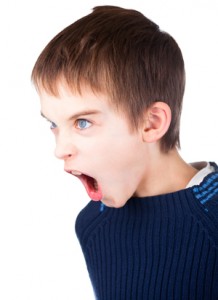 Researcher Kiki Chang discussed pediatric acute onset neuropsychiatric syndrome (PANS), an inflammatory illness with psychiatric symptoms, at the 2014 meeting of the American Academy of Child and Adolescent Psychiatry. PANS is diagnosed when following an infection, a child who had previously been well has a sudden onset of obsessive-compulsive disorder (OCD), mood dysregulation, tics, food restriction behaviors, and a variety of other symptoms. A similar syndrome called PANDAS (for pediatric acute onset neuropsychiatic disease associated with streptococcal infections) was first identified in children recovering from strep throat. The children suddenly developed OCD behaviors and tics after a streptococcal infection.
Researcher Kiki Chang discussed pediatric acute onset neuropsychiatric syndrome (PANS), an inflammatory illness with psychiatric symptoms, at the 2014 meeting of the American Academy of Child and Adolescent Psychiatry. PANS is diagnosed when following an infection, a child who had previously been well has a sudden onset of obsessive-compulsive disorder (OCD), mood dysregulation, tics, food restriction behaviors, and a variety of other symptoms. A similar syndrome called PANDAS (for pediatric acute onset neuropsychiatic disease associated with streptococcal infections) was first identified in children recovering from strep throat. The children suddenly developed OCD behaviors and tics after a streptococcal infection.
However, PANS is associated with a variety of infections, including viruses and other infections that do not involve streptococcus bacteria. PANS syndrome is typified by acute onset of obsessive compulsive disorder and food restrictions as well as two or more of the following symptoms: anxiety, mood swings and depression, irritability and aggression, behavioral regression, decreases in school performance, sensory motor abnormalities, and somatic alterations such as decreased sleep and urinary incontinence, frequency, and/or urgency. Tics are not part of the formal diagnosis, but are present in about 50% of patients.
In Chang’s experience, the syndrome emerged 65% of the time in relationship to streptococcal infections, 13% with mycoplasma infections, 58% with viral infections, 39% in association with sinusitis, and 16% with otitis (inflammation of the ear). Increases in blood flow in the basal ganglia and increases in its volume likely occur due to antibodies that the immune system produces to fight infection, but which instead attack elements in the brain’s striatum, including tubulin, calcium calmodulin kinase II, lyso-GM-1, and dopamine D1 and D2 receptors.
Chang suggested that a diagnostic workup for PANS should include: a complete blood count and screening for red blood cell sedimentation rate, mycoplasma antibodies IgG and IgM, anti-nuclear antibodies (ANA), ferritin (a protein that stores iron in blood), celiac disease, and other laboratory measures that are commercially available in a panel produced by the company Moleculera Labs. A more detailed description of the PANS syndrome and its diagnosis and workup is available in the most recent 2014 issue of the Journal of the American Academy of Child and Adolescent Psychiatry.
In a related poster, Jennifer Frankovich, another researcher in Chang’s lab, reported that 62% of family members of children with PANS had a history of autoimmune disorders.

